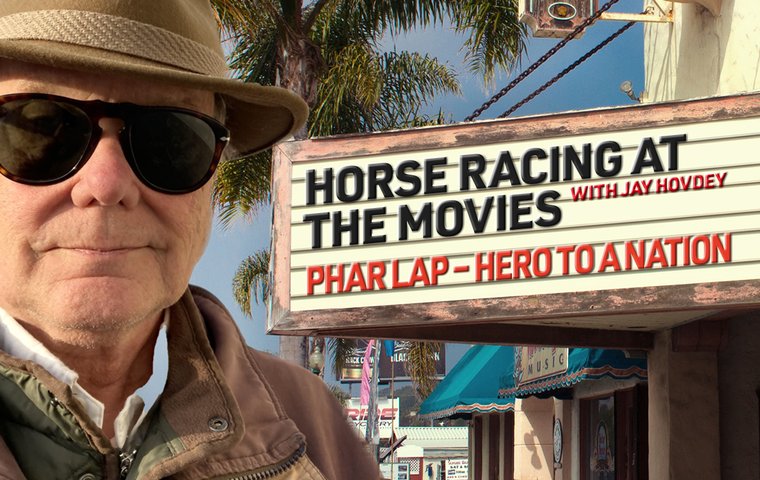
Veteran director Simon Wincer explains how he sought to tell the widely familiar tale of a remarkable racehorse with as much historical authenticity as possible
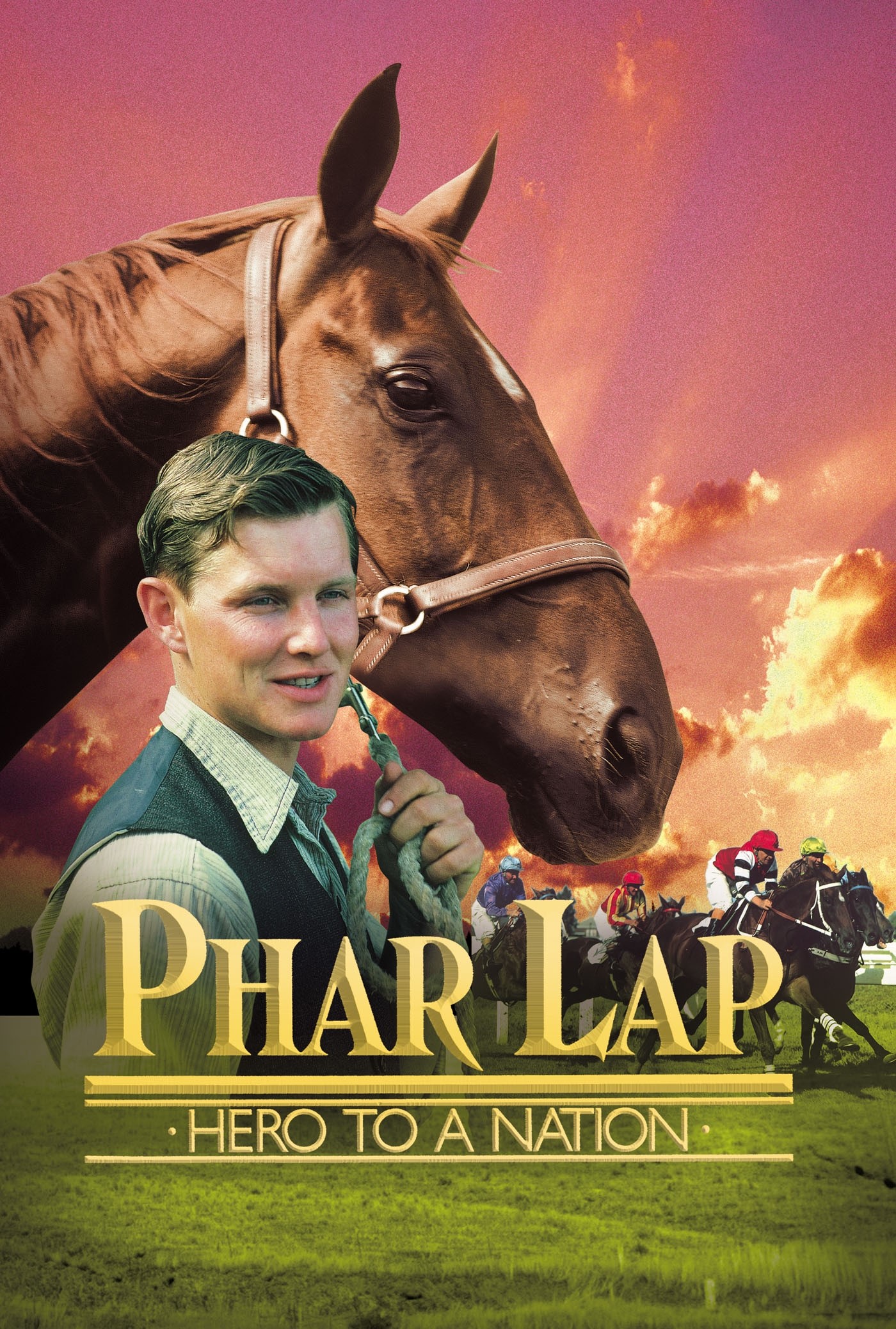 Phar Lap: Hero To A Nation (1983)
Phar Lap: Hero To A Nation (1983)
directed by Simon Wincer; starring Tom Burlinson, Ron Leibman and Martin Vaughan
Simon Wincer did not set out to make a national treasure. Working with a sizeable budget for the times, the veteran director of Australian television dramas was intent instead upon telling the widely familiar tale of a remarkable racehorse with as much historical accuracy as possible, both in terms of the action on the track and the turmoil behind the scenes.
That turmoil includes strains of venality, blind ambition, and class prejudice. Top that off with the most heartbreaking ending this side of Old Yeller, and you have Phar Lap: Hero To A Nation. Tears are both expected and encouraged, even after several viewings.
North American audiences began discovering Australian cinema in the late 1970s and early 1980s. Films like Mad Max, Gallipoli and Breaker Morant landed directors George Miller, Peter Weir and Bruce Beresford squarely on Hollywood’s radar. In 1982, Miller’s The Man From Snowy River became a popular Aussie export, featuring some amazing equine stuntwork and the promising young lead, Tom Burlinson.
Wincer, an executive producer on The Man From Snowy River, snapped up Burlinson for his Phar Lap project to play Tommy Woodcock, the groom – or ‘strapper’ – whose connection with the big horse lies at the center of the film. This is Velvet and Pie, writ large and Down Under, besieged by doubters and played for emotional payoffs already baked into a legend that had survived for decades.
Phar Lap, the real horse, was born October 4, 1926. He was foaled on New Zealand’s south island and sold as a yearling to Australian trainer Harry Telford for the equivalent of about $800. His name is derived from the word for ‘lightning’ in a language spoken in the region of northern Thailand and southern China.
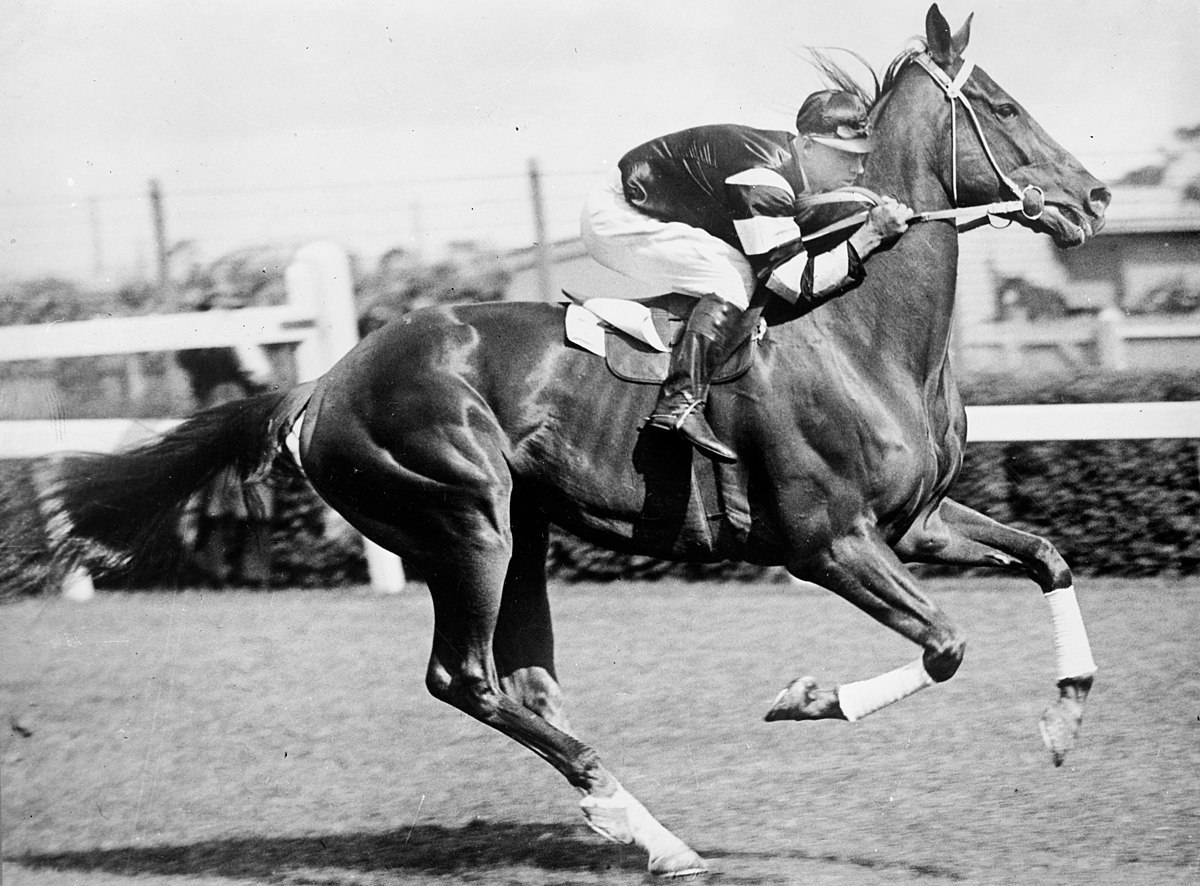 Phar Lap lost 11 of his first 16 starts and then won 32 of his last 35 races. As he prospered, he was asked to carry more and more weight by track handicappers, once as much as 150 pounds. In the Melbourne Cup, the world’s most famous handicap, Phar Lap carried 138 pounds to victory in 1930. The most any Cup winner has carried in the ensuing 93 years is the 134 pounds packed by Dalray in 1952.
Phar Lap lost 11 of his first 16 starts and then won 32 of his last 35 races. As he prospered, he was asked to carry more and more weight by track handicappers, once as much as 150 pounds. In the Melbourne Cup, the world’s most famous handicap, Phar Lap carried 138 pounds to victory in 1930. The most any Cup winner has carried in the ensuing 93 years is the 134 pounds packed by Dalray in 1952.
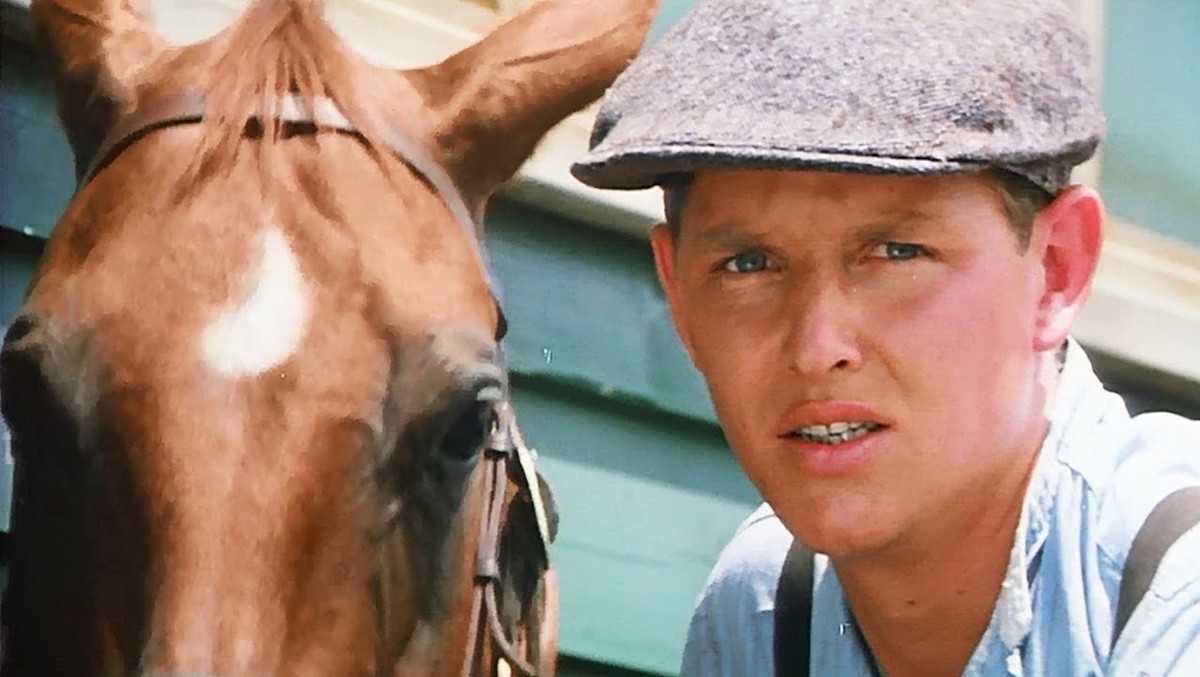
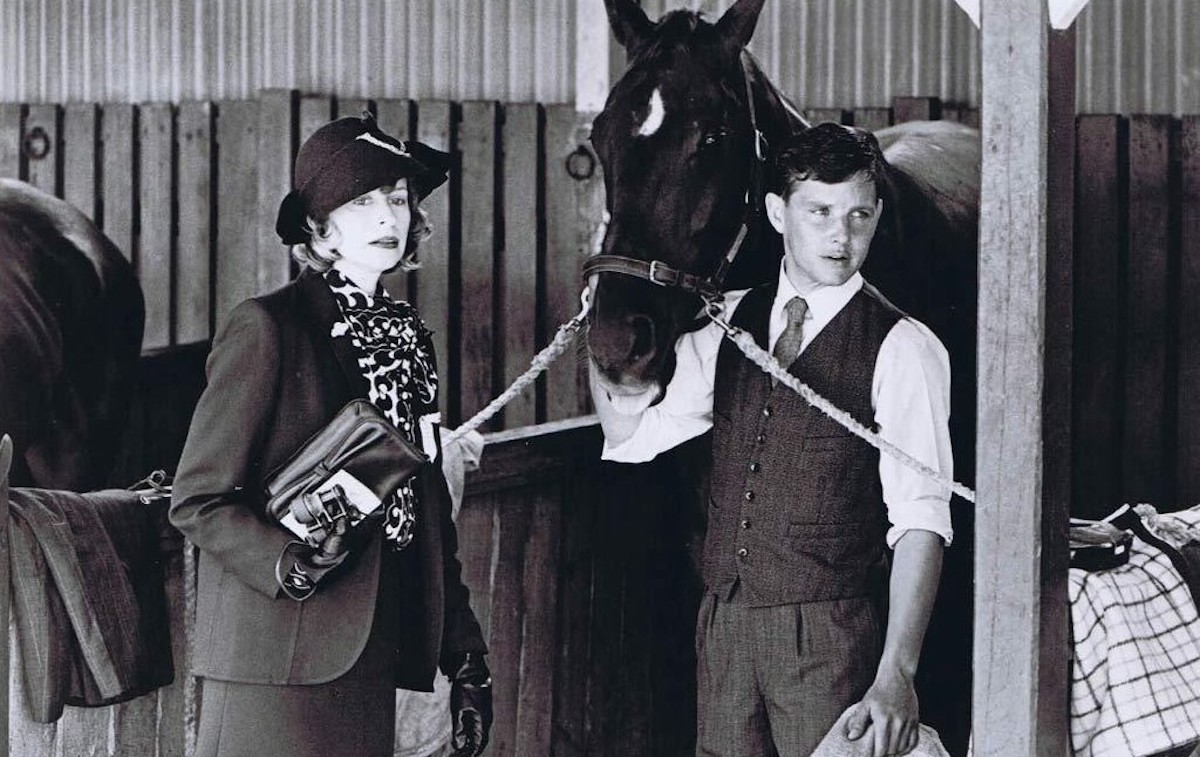
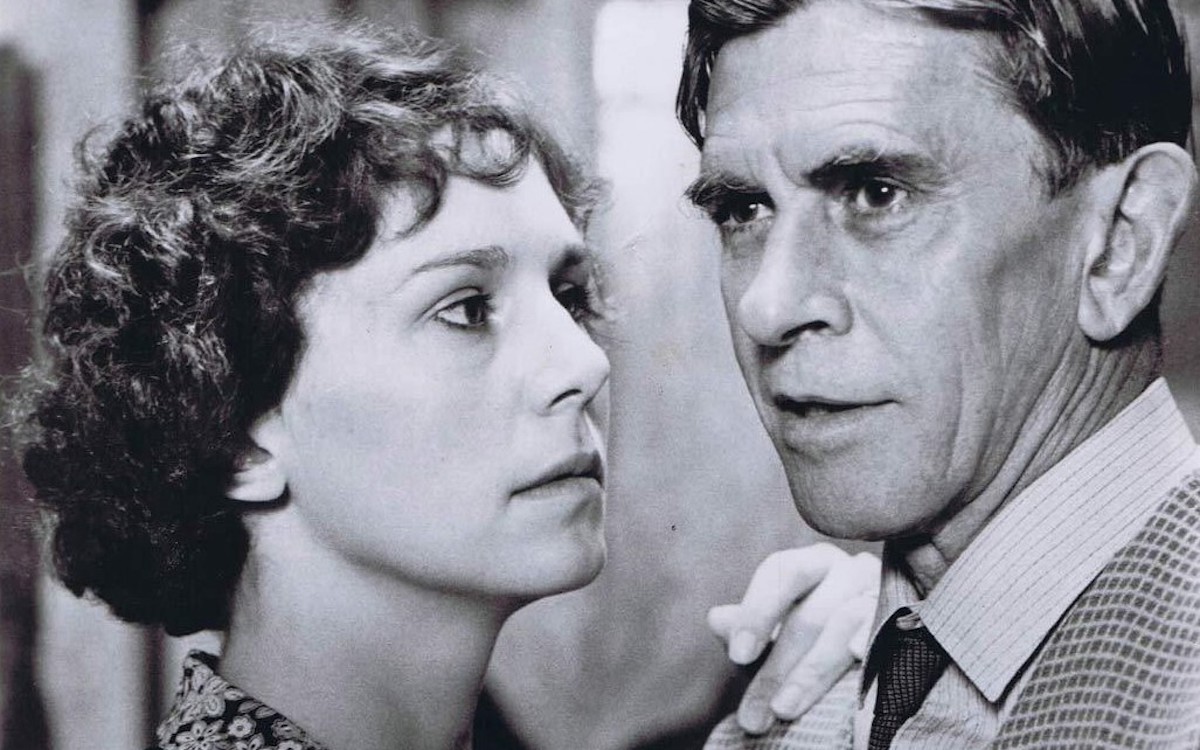
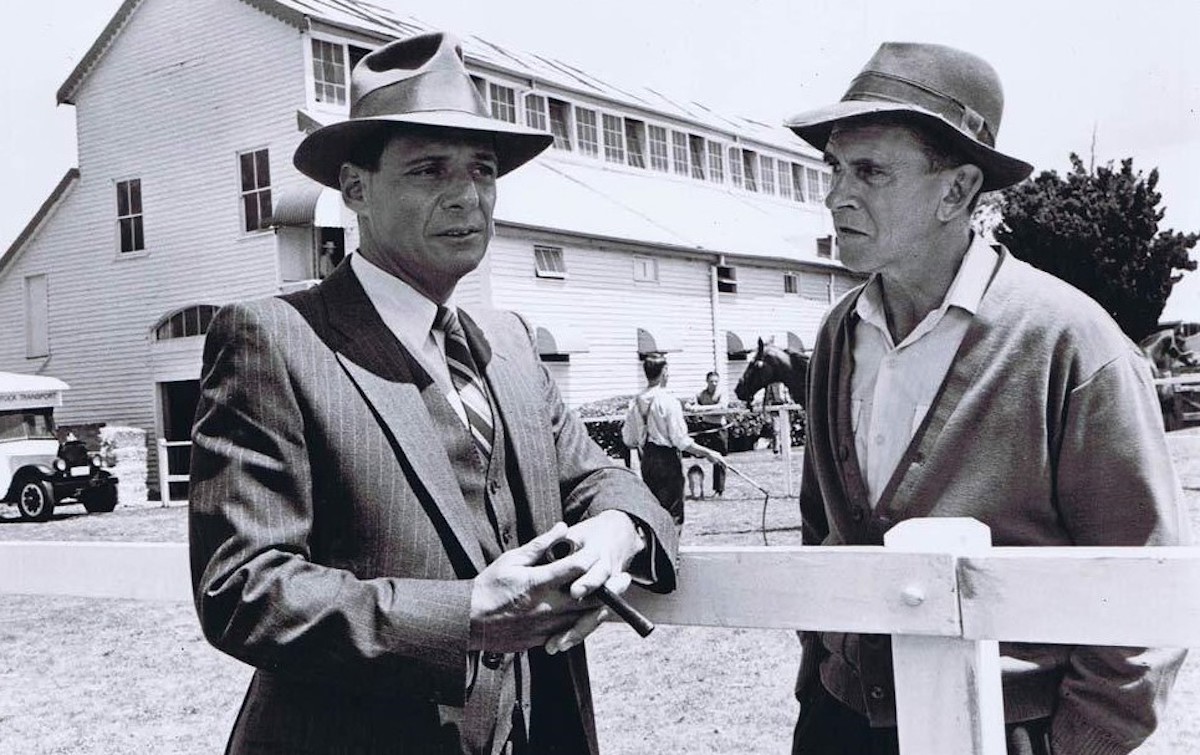
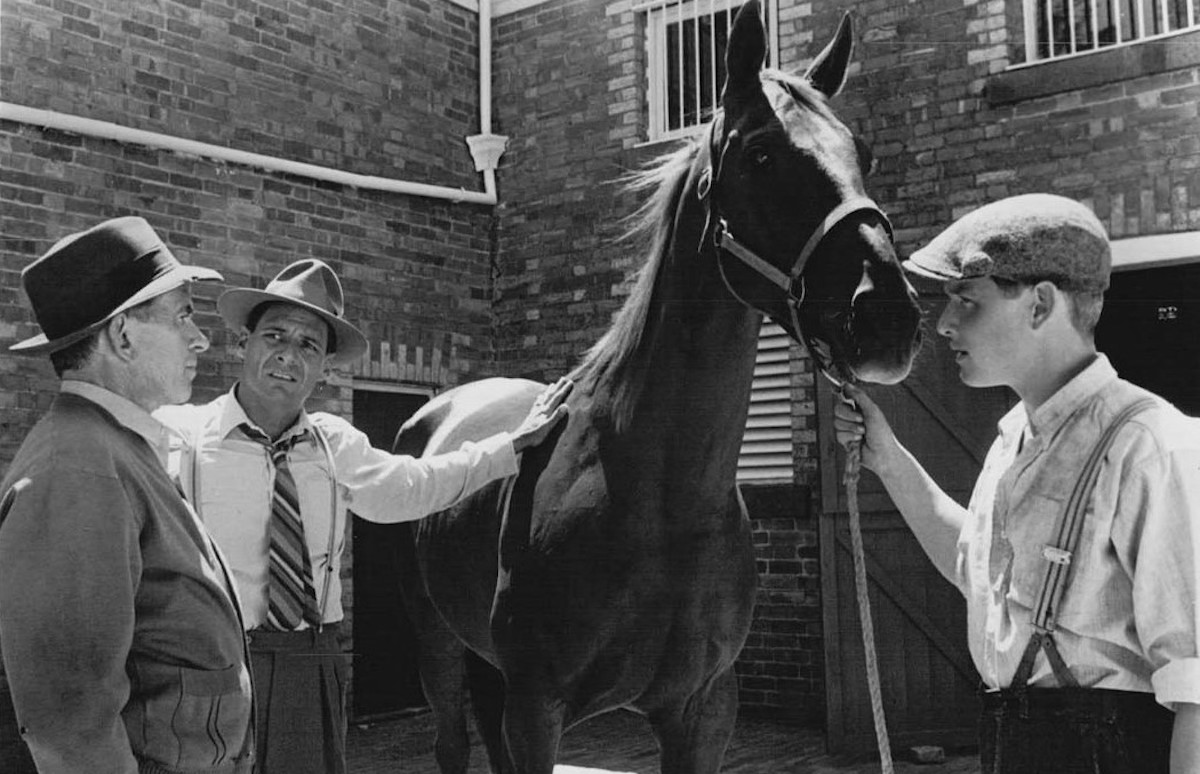 “Before he did Snowy River, Tom Burlinson had never ridden a horse,” said Wincer recently from his home in Australia. “He turned out to be an absolute natural.
“Before he did Snowy River, Tom Burlinson had never ridden a horse,” said Wincer recently from his home in Australia. “He turned out to be an absolute natural.
“After his first rehearsals for Phar Lap, though, while learning to ride short like a jockey, he could barely walk. His thighs were killing him.”
Burlinson is in the saddle for scenes of Phar Lap in track work at the Telford stables, aboard one of the lookalikes used for action sequences.
Gangly, unattractive yearling
The movie toggles back and forth between the evolution of the racehorse and the private lives of Telford, played by Martin Vaughan, and Woodcock, along with the ex-pat American Dave Davis, who backed away from full ownership when he caught first sight of the gangly, unattractive yearling.
Davis was played by Ron Leibman, known for his vivid supporting roles in Slaughterhouse-Five, Norma Rae, and Where’s Poppa?
The abuse of the prevalent handicap system is played as a bane to the game, as is the temptation to use punitive weight assignments on a heavy favorite to manipulate a gamble.
There is time spent as well on the relentless training routine imposed on the big chestnut by Telford, although a look at the work schedule asked of Secretariat 40 years later suggests Phar Lap may have gotten off easy.
Dramatic highpoint
The film’s dramatic highpoint surrounds the 1930 Melbourne Cup and the delay in Phar Lap’s arrival at Flemington Racecourse that is milked for all it’s worth, complete with a swelling score and a choreographed wave of the rising grandstand crowd as Woodcock leads his horse in at a rapid trot just in time to be saddled. And win.
Phar Lap ran for the last time on March 20, 1932, at Agua Caliente Racetrack in Tijuana, Mexico, after a high seas crossing. In Wincer’s original cut of the film, the death of Phar Lap in Northern California from a mysterious cause, 15 days after his victory in the $50,000 Agua Caliente Handicap, opens the film, while in the North American version, the agonizing final hours of the horse are placed at the end.
“The Australian audience would have had to go through the whole film, knowing already he was going to die,” Wincer said. “Dealing with that at the beginning allowed the rest of the story to be told without his death hanging over everyone.
“But I do like the American version, too, because that audience would not necessarily have known how and when he died. The film still works.”
It works especially as a visual feast, with settings that range from shoreline gallops to gruelling climbs up deep and daunting sand dunes. A variety of Australian tracks, circa 1980, stand in for the courses from a half a century earlier, and the city scenes are appropriately dressed for the era.
Great Depression
“It was the Great Depression,” Wincer said. “Even if they had to walk to the racecourse, the poorest of the poor knew they could put a shilling on Phar Lap and get their money back and a bit more.”
Early in the project, Wincer and Burlinson visited Woodcock at his stables, where he was still training well into his 70s. In fact, Woodcock nearly won the Cup as a trainer in 1977, when his colt Reckless came a close second to Gold And Black.
“One of the great joys of making the movie was meeting and getting to know Tommy Woodcock,” Wincer said. “We went down on a Sunday in late winter. He showed us around the stables, and then the three of us sat outside on some logs in the afternoon sun. Tommy started talking about Phar Lap and the way he died. I looked across to Tom. He was starting to cry, and I was starting to cry.
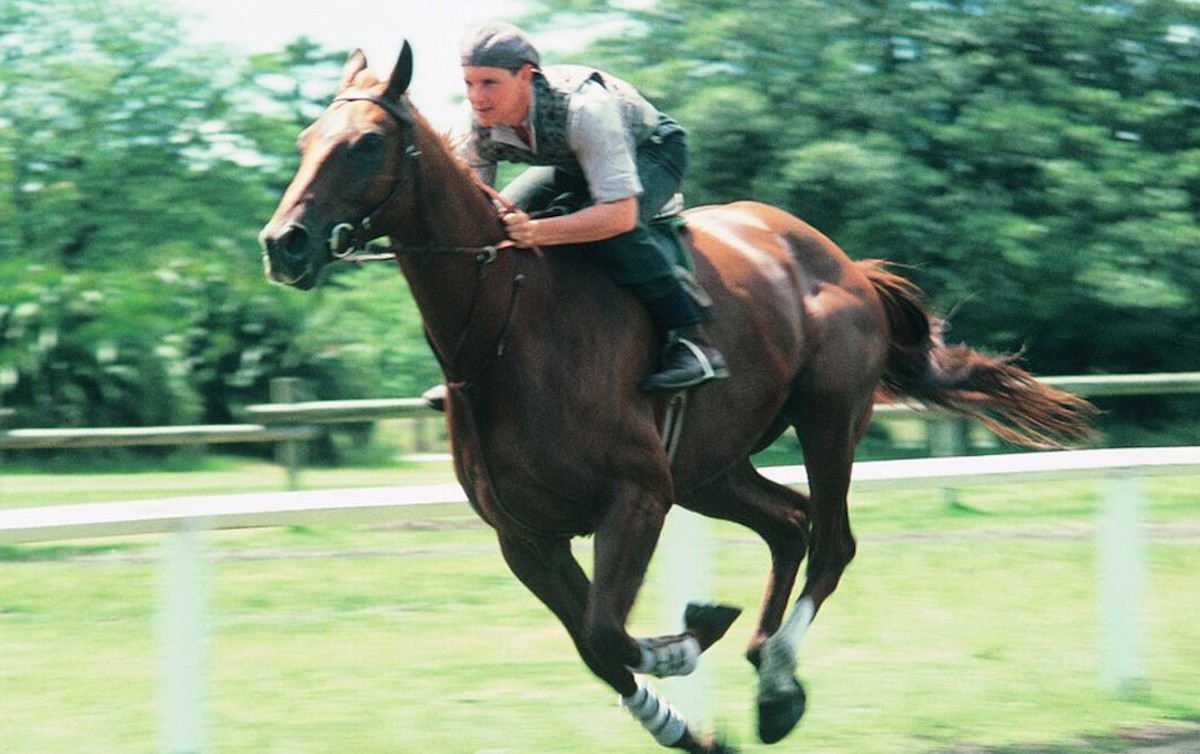 “We were very nervous about showing Tommy the horse we were using for most of the non-racing scenes,” Wincer continued.
“We were very nervous about showing Tommy the horse we were using for most of the non-racing scenes,” Wincer continued.
Towering Inferno
“His name was Towering Inferno. One of the things he had to do, as Phar Lap did in real life, was eat sugar cubes. Phar Lap just loved them. But Towering Inferno refused to eat them, and we tried everything – cut-up apples, carrots, bits of bread. He wouldn’t touch any of it.
“The day Tommy visited, we opened the stall door and he goes, ‘Bobby!’ – that was his nickname for Phar Lap,” Wincer said. “The big horse came straight across to the stall door, Tommy pulled out a sugar cube, and gave it to Towering Inferno. From that day forward he ate sugar cubes.”
Wincer has not directed a feature film since The Cup in 2011, in which he revisited the 2002 running of Australia’s most famous race and the story of winning jockey Damien Oliver. 
He also directed Bluegrass, a TV movie from 1988 chock full of high drama and low morals in the Kentucky Thoroughbred world. Chances are, though, Wincer’s name will come up more often than not as the director of Lonesome Dove, the four-part television series based on the novel by Larry McMurtry, for which Wincer won a prime-time Emmy.
Currently, Wincer (right) is trying to bring the story of another legendary horse to the screen. This one is Bill the Bastard, an Australian military mount who bravely served in the Middle Eastern theatre of World War I.
‘You do silly things’
Besides movies, Wincer’s other passion has been polo. “I still ride horses, but I’m no longer playing polo,” he said. “When you get to my age the adrenalin kicks in and you do silly things, so I had to quit two years ago.” He turned 80 this year.
While Australian critics hailed the movie, US critics grappled with a take on the altered version. Frank DeFord took a parochial view in Sports Illustrated, writing, “In racing parlance, Phar Lap isn't a good shipper, and American audiences are likely to be bored by the whole banal business,” although Janet Maslin of the New York Times enjoyed the film, noting, “About a half-hour into Phar Lap … it becomes clear to the audience that this heroic horse simply isn’t going to lose.”
Elsewhere in the Times, their savvy racing writer Steven Crist observed that “…one of the film’s strengths is its unsentimental retelling of the story and depiction of the sport.”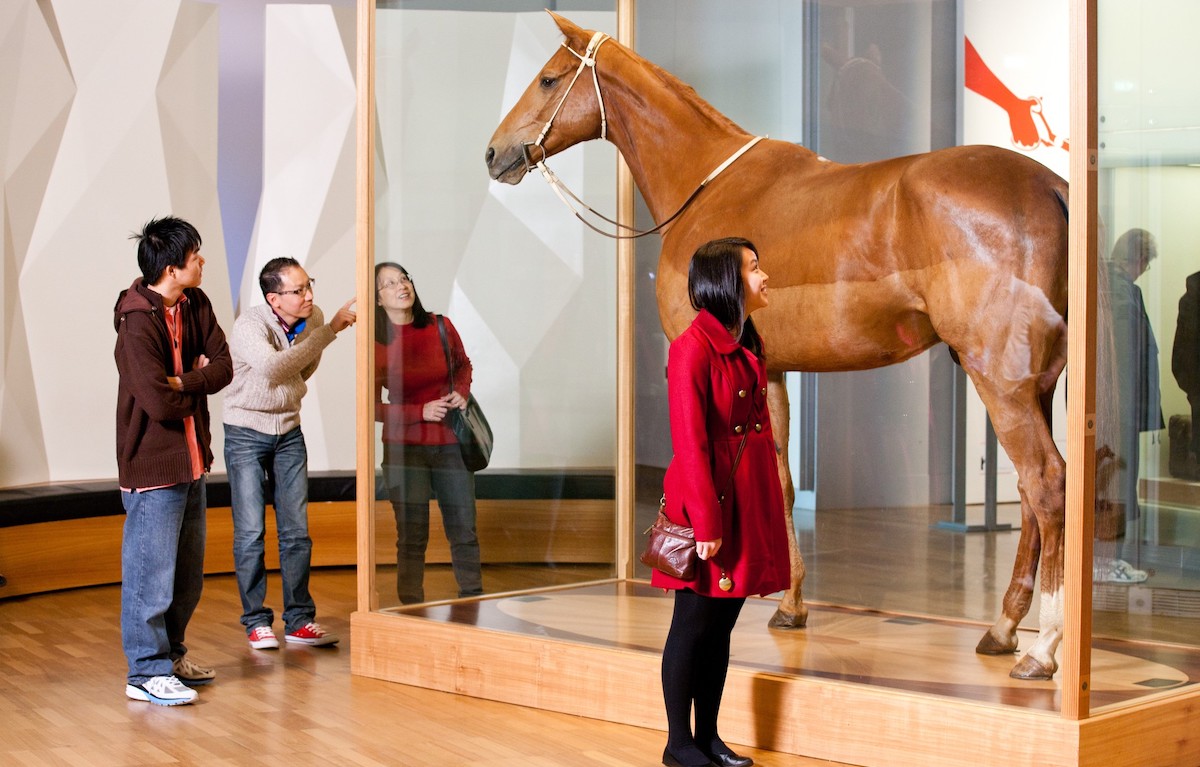
Back home, Phar Lap remains a national hero. His heart was donated to the Institute of Anatomy in Canberra, his skeleton can be found in New Zealand's National Museum in Wellington, and his taxidermied body is on display in the Australia Gallery at Melbourne Museum.
This year, Phar Lap: Hero To A Nation is enjoying a 40th anniversary revival, with big-screen showings and Q&A sessions with Burlinson and Wincer, among others.
There is a decent YouTube version of the original cut of the movie, and DVDs are available for purchase. The film has popped up on the various streaming services from time to time.
• View all Jay Hovdey’s features in his Favorite Racehorses series
Horse racing at the movies: The Killing is a polished gem in a poisonous setting
View the latest TRC Global Rankings for horses / jockeys / trainers / sires


